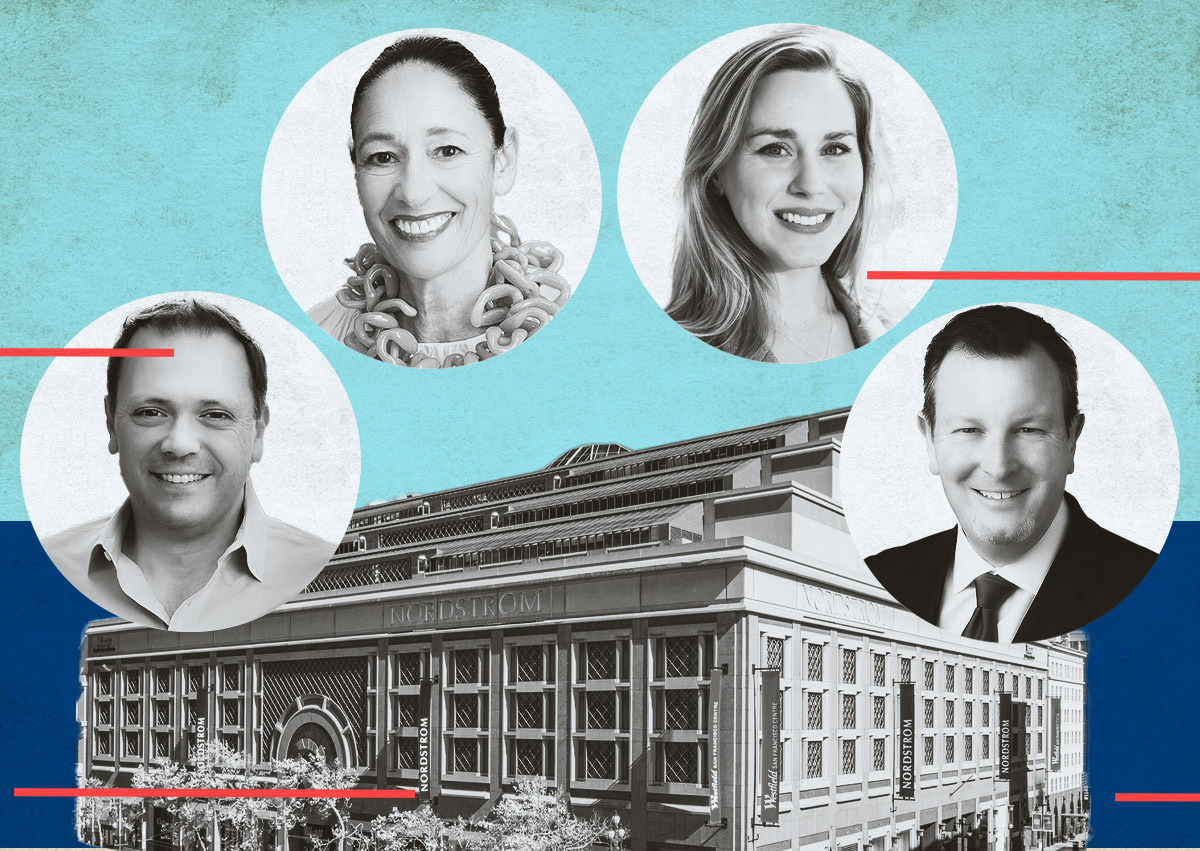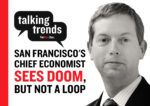When San Francisco considers legislation that could have an economic impact, the city’s Chief Economist Ted Egan gets the numbers that define that impact. His data and analyses go to the policymakers and voters who ultimately decide its fate.
In recent years, as the city’s economic fortunes have faltered, Egan and his team within the city controller’s office have written reports supporting a reduction in affordable housing requirements and development fees, examined the possible impact of bike lanes on struggling commercial corridors and provided monthly updates on the city’s economic big picture.
He’s currently working on reports covering the economic impact of two local ballot measures coming before voters this November: one business tax reform measure and another that would levy a new tax on ride hailing services like Uber, Lyft and Waymo to help fund the struggling San Francisco Municipal Transportation Agency. Post-election, the implications of rezoning the city in accordance with its state-mandated Housing Element will be on the top of his list.
Egan spoke to TRD about where the city stands on housing and hospitality recovery, as well as why the current office decline leads him to “see doom,” but not the “loop” from the well-known headlines about the city.
“Cities in a fiscal spiral, they have to cut spending, a lot of things start unraveling, and you have negative reinforcing dynamics,” said Egan, who grew up in Buffalo and has first-hand experience living through the plunging economy that came when factories closed en masse in the western New York city 40 years ago. “You could have that happen in San Francisco. It’s not a complete impossibility. But I don’t really see any of the warning signs.”
What does the most recent data tell you about San Francisco’s economy?
The good news has been more on the labor market side, and the bad news has been more on the real estate side.
More than a third of our office space is vacant, but fortunately, our unemployment rate is not nearly that bad. It’s much better to have a lot of vacant office space than a lot of unemployed people.
We’ve seen a consistent uptick in tech employment since April. The worst may be over in terms of tech and it still has an outsized influence on our local economy.
Do those jobs make a difference if people aren’t coming into the office?
They make a difference in that they’re getting a paycheck, and they’re not requiring government assistance. They’re pumping money into the economy, just perhaps not in Downtown, where we were used to them pumping money into the economy before.
How has that impacted the retail and restaurant sector downtown?
The best way to look at that group of businesses is with sales tax data. San Francisco sales tax during the pandemic was the weakest of any county in California and the bulk of the pain was concentrated Downtown.
As with most aspects of the city’s economy, sales tax recovery has been steady but slow, and we are not back to normal in many parts of the city, but particularly Downtown and especially when you think about inflation over the last four years.
The neighborhood corridors are doing better than Downtown, though not necessarily better than they were in 2019. It’s good not to be losing that sales tax to suburban jurisdictions, but it doesn’t really make up for the loss of revenue Downtown, which is not just about San Francisco residents, but commuters and visitors as well.
Your data shows that San Francisco is at about 80 percent of 2019 levels as far as revenue and occupancy in hotels, while other cities have more than recovered on both. Why the delayed recovery in the hospitality sector?
Business tourism is the big reason in terms of hotel revenue. We did get a big boost from international travel before the pandemic, especially from China, and that hasn’t recovered. But really we were much more dependent on business travel — and I mean the kind of transient business travel of people coming in for office meetings — than a lot of other places that just aren’t dynamic Downtown employment centers like we are.
We’ve seen the hotel industry pivot in San Francisco much more to leisure than it was before, and they’re just not sustaining the rates as much as the business travelers did.
Our convention business, which is also really important to us, is not as strong as it was, while major competitors to us, places like San Diego and Las Vegas, are doing well. Some of that comes down to brand and the reputational hit the city has taken.
I don’t see, structurally, San Francisco hospitality going back to 2019 because I don’t see the office world going back to 2019.
How does the city need to adjust its spending to account for lower revenue streams?
Business tax is about a billion and a half dollars of general fund revenue and we’ve estimated that if it wasn’t for work from home, it could be another $500 million a year. We haven’t seen as much budgetary loss from that revenue because our companies are still so successful, but in terms of foregone revenue, it has certainly hit us there as well.
Every year we balance the budget in San Francisco—we’re required to by law. We have a five-year financial planning forecast, and it is showing a stark picture of revenue growth that is not at the level that we are used to seeing in the city, and costs growing at levels that, frankly, we are used to seeing in the city. And that’s not really sustainable for the long term.
When you give guidance about inclusionary zoning and lowering developer fees, is the upshot that it is worth the short term loss of city revenue to get things moving again?
Our office did recommend that the city needs to lower its inclusionary housing fees, and there wasn’t a lot of dissent about that. I think everybody realized that 23 percent of nothing is nothing.
If you want to see affordable housing get built through the inclusionary mechanism, then you need to set the fees at a level where at least some types of projects make financial sense. Nobody likes that news but as a policy decision, it’s not that hard to make.
At the levels we recommended, the city is still going to see less housing production than we’re used to. But we would expect to see some low- and mid-rise projects be closer to feasibility. Our process is set up to look at the market every three years, and if the market is really different in three years, we can adjust things.
Any kind of investment where you’re making upfront investments of your funds, you want certainty, and the more uncertainty there is, the more signal there is not to invest.
What other potential policy changes are you keeping an eye on?
We’re going to continue to work on our property tax model and look at the results now that we have some assessment appeals data that’s going to help inform what we think our property tax revenue is going to look like. We did an exercise like that a couple of years ago that led us to estimate that maybe a third of our property tax revenue from offices would be at risk by the end of the decade.
We are seeing office values fall by 60 percent or more from a pre-pandemic peak but that doesn’t mean that the property tax is going to fall that much because of Proposition 13. We had one case of a property that sold at a big markdown, but hadn’t previously been sold since the early nineties so it was under-assessed relative to its value and its property tax is actually going to go up.
Office is only about 18% of the city’s total property tax, but we were also expecting weaknesses in other kinds of commercial real estate, and some in residential as well.
What about the residential market?
Housing is a lot more affordable than before the pandemic. A San Francisco condo cost maybe six times the national average and now it’s less than four times the national average. San Francisco residential rents are basically flat since 2019, and they’re up 40 percent or 50 percent in most other markets, especially in suburban markets.
We haven’t seen a flood of people moving into San Francisco yet to take advantage of that. The migration of people who moved in during 2021, 2022 fits the profile of the folks who were moving in before: a lot of tech workers, a lot of young people. So we’re not yet seeing a major shift in who’s choosing to live in San Francisco, but I’m not sure that the relative affordability story is done changing.
Housing is going to get cheaper still in relative terms and office space is going to get cheaper in relative terms and absolute terms. For any type of business, the chance to move into San Francisco during this lull in the market really paves the way for long-term stable growth in the city.
What can the city actually do to impact the speed of its economic recovery?
We do have a lot of control over things that we can adjust if we want to see more investment and more economic development.
One of the things that’s tricky now is we don’t know where the market wants to go, and we can’t really be in a position of leading the market.
The private sector needs to see now is the right time to do this in Downtown San Francisco, and then you support that. I don’t think you want to come out with some bold vision and say, “This is how we think the future is going to be,” and then you don’t have capital, and you don’t have the expertise as a city to make that happen, and you don’t have the private sector partnerships.
Office vacancy is up everywhere, but office vacancy is up nowhere as much as it is in San Francisco. We are absolutely at the forefront of this trend of going from an incredibly hot office market to an incredibly cold office market, and it has to do with who our office mix is, and how much they have adapted and been able to thrive with remote work.
Read more






